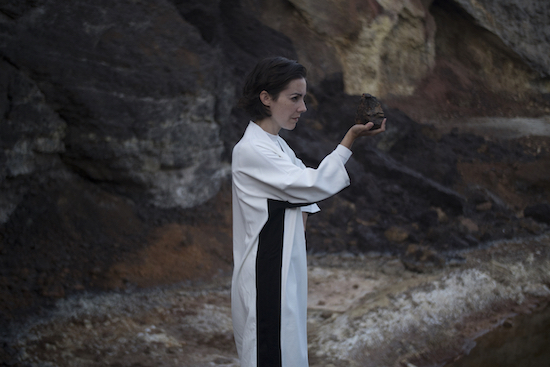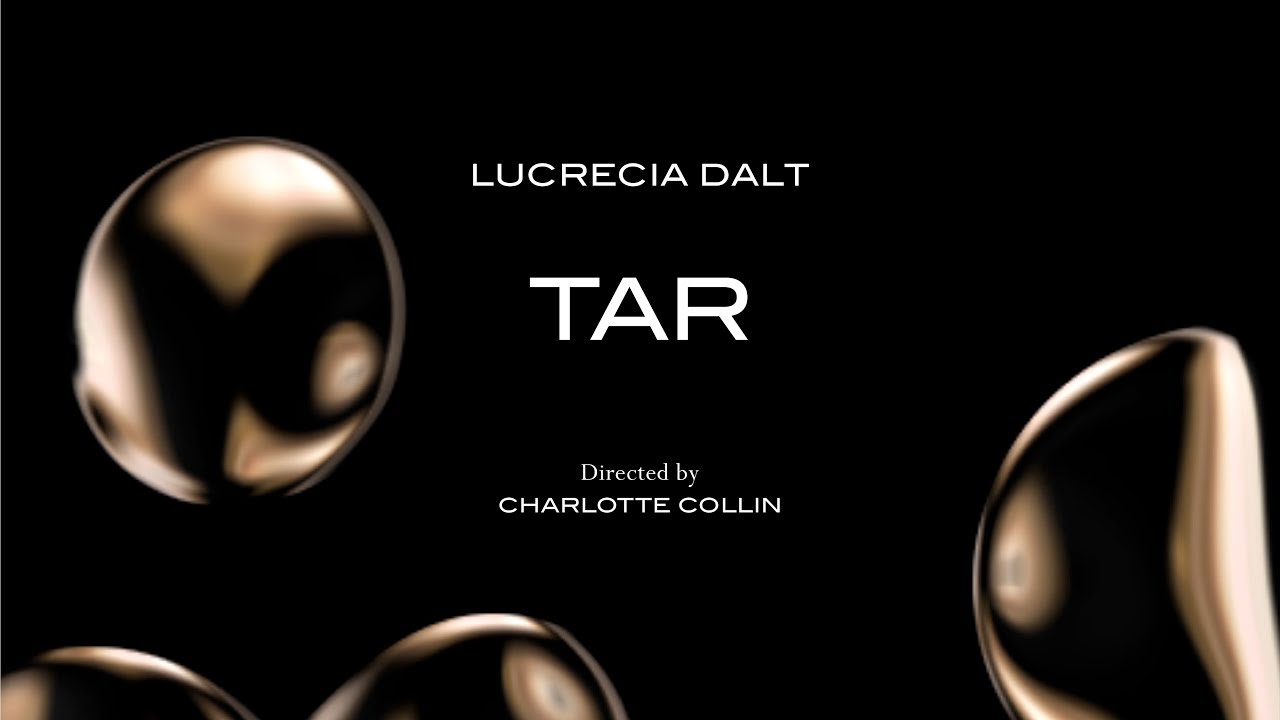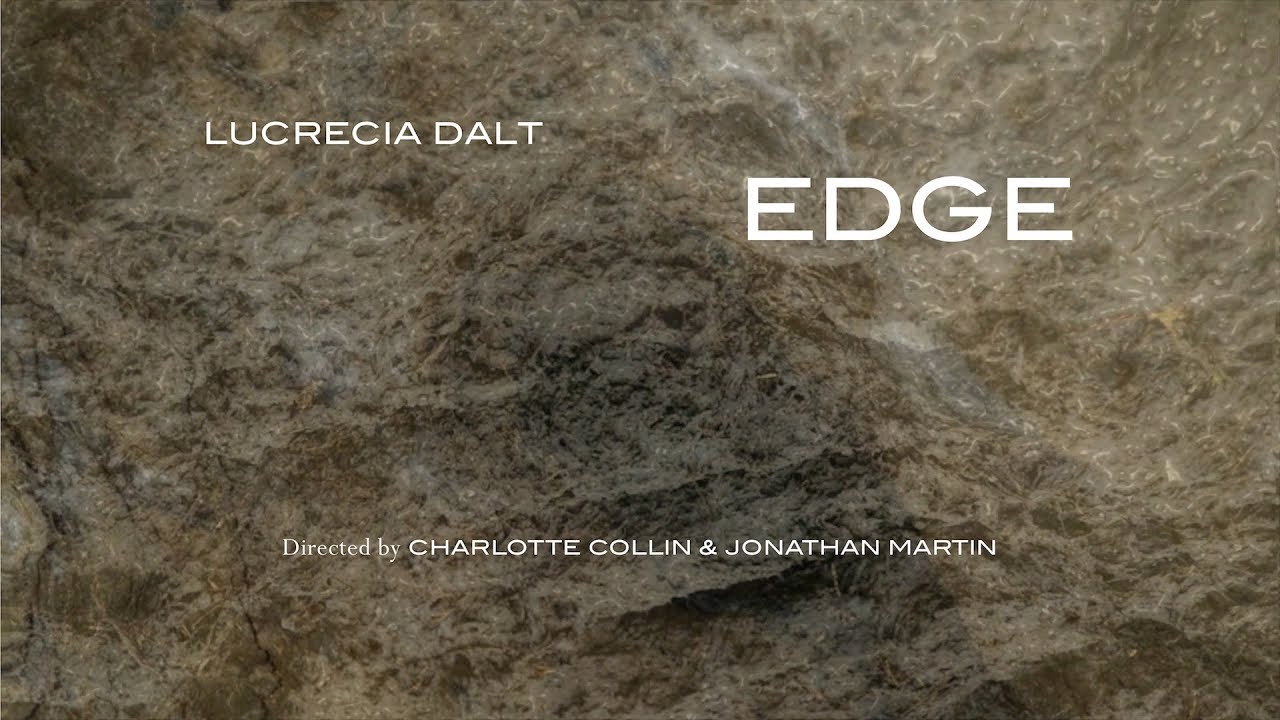“I’m gathering up skins. I’m gathering up skins and blowing them up like balloons.”
These are the two lines that open Lucrecia Dalt’s debut, Anticlines. They are in reference to the El Boraro, a creature in Colombian folklore. Dwelling in the forest, it crushes its victims by embracing them, then cuts a hole in their forehead to suck the remaining pulp inside their body. Then, it inflates the remaining skin, and sends it back towards civilisation.
Born in Colombia but now residing in Berlin, Dalt is an ex-geotechnical engineer, now working in the realms of music. Although geo-technology would seem the perfect jumping off point to tackling electronic music, Dalt is adamant that while there is an influence, it is indirect.
“Any concept from geology or stemming from the memories I have of my past as an engineer are used as metaphors, especially to write the lyrics and to create a context or a mood to begin working with sound” she states. I spoke to Dalt about geology, Colombian myth and spoken word.
Seeing as the album is called Anticlines, could you explain more about what an anticline is, and how it relates to the album?
Lucrecia Dalt: An anticline is a [rock] formation or a type of fold that has the oldest strata at the core and not at the bottom. I use this as an image or a metaphor for thinking about the way I approach disruption in my own music. When interior suddenly becomes exterior you end up with a different form of consciousness and different ways of experiencing it.
Speaking of different forms of consciousness, thematically the album constantly hits on the limits of human existence, and our reliance on the Earth. Not only that but, our reliance on each other via touch and sight. Could you speak more about this?
LD: I wanted to explore this idea of the “unhuman” as presented in Dylan Trigg’s book The Horror Of Darkness. “In unhuman phenomenology, the body is not defined by the subject, nor by the sociocultural-historical conditions in which it is inscribed.” How to shift the centre of experience, working at the disorder generated by shifting or messing with interior and exterior like I said before. And how all that relates to limits, borders, surfaces, contact, touch, while moving from human to non-human scales.
Right, and the track ‘Analogue Mountains’ concerns a meteorite called ALH84001. What is the significance of that?
LD: This idea was presented in the book Mount Analogue by René Daumal. “Its summit must be inaccessible, but its base accessible to human beings as nature made them. It must be unique, and it must exist geographically. The door to the invisible must be visible.” On the other hand, I found interesting how the fossilized bacteria found in ALH84001 could present us with a prospect that is anterior to our collective subjectivity as humans. I used these two ideas to write the lyrics for ‘Analogue Mountains’ as I was thinking about all these pieces of information hidden in depths of our own earth and its potentiality to serve as evidence for shifting our own history.
The idea of information being hidden reminds me of the plans for the Anticlines live show? I understand you want to create a kind of ‘alienated lecture’ where you intend “to provide meaning and a place for the listener to meditate or relate to the concerns and ideas”.
LD: It’s a mildly theatrical logistic. I was thinking of a lecture because of the subjects I’m dealing with in the lyrics. It’s a lecture that is alienated or haunted by a musical performance. This is an attempt at finding ways to make my stage persona more active, confrontational and also to add more nuances to my work.
Could you speak about your collaborations with Regina de Miguel?
LD: We started collaborating about three years ago. She asked me to compose four pieces of music for four poems she’d written dealing with life in resilience. Since then, we have been involved in so many projects together; installations, performances, films, radio. Or the recently presented spoken-text-performance “opera” called V.I.T.R.I.O.L at Haus der Kulturen der Welt. I think this is my favourite collaboration with her so far because it involves equally all our resources and potentialities, also because the subject matter is so close to my heart, as it deals with information that has to do with the way corruption in Colombia is jeopardising every corner of our country. This performance invokes the enunciation of new alchemical formulas that might offer forms of affective resistance to extractive imageries and the geographies of violence linked to these, as well as to technological and cultural mechanisms of representation.
Did the mixing of Colombian rhythms with electronics come naturally? Or was it something pre-determined?
LD: I’m not sure I would say I mixed “Colombian” rhythms with electronics. I mean, I don’t take a genre and try to incorporate it into my music. What I do sometimes is that I try to grasp the essence or the groove of a certain rhythm and program that on my sequencers just to see what happens. But this is quite far from doing a conscious type of fusion.
Was the pulling from Colombian myth a natural progression?
LD: Well, nothing seems very natural about it, I mean, at the time I was gathering up concepts for the album, I was thinking a lot about edges and bubbles at various scales and compositions and how to work with that. And I found out about this creature, El Boraro, that is able to create inflatable bodies and I loved that idea as a metaphor for extreme/obsessive love, or a different take on erotics.
I hear clear influence from Laurie Anderson, Robert Ashley and especially Lena Platonos. Do you see yourself in a sort of lineage with these artists? Or is it merely a coincidental relationship?
LD: In regards to Anderson, I see why it’s rather straightforward to make that connection as there are perhaps few “recognised” women working with spoken word. I admire her work, but I don’t think Anticlines has directly fed from it, I feel she’s more of a storyteller than I am, and I identify my lyrics more as some kind of speculative fiction poetry. For me, it’s important to pay close attention to micro shifts in intonation, breath and in that sense, I guess I do feel more identified with Robert Ashley’s work, how he consciously deals with accents, pauses, breathing. Lena Platonos has been inspiring as well, and in this lineage of “spoken word” or artists working with text I’ve been influenced by Laurent Fairon, Asda, Marcus Schmickler’s work with Julian Rohrhuber, Melody Sumner Carnahan, Ruth White, Throbbing Gristle, Felix Kubin, Sea Urchin or Robert Ashley’s magnificent pieces ‘Love letter’ and ‘The Park’.
Anticlines is out now on RVNG Intl.




